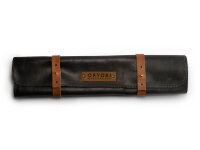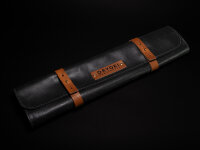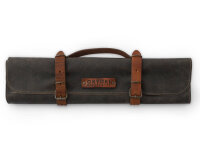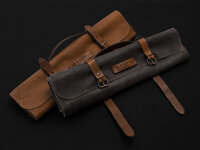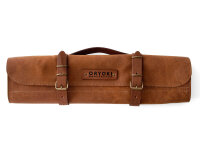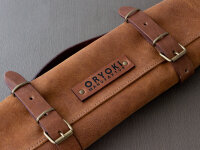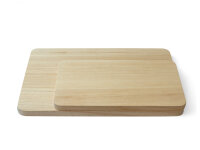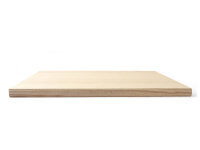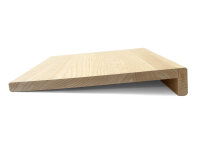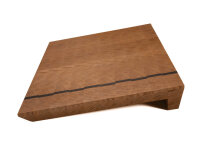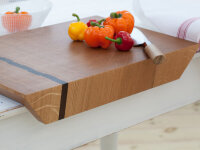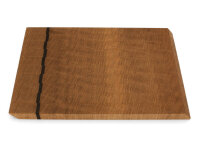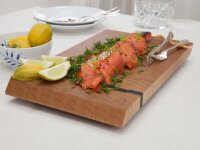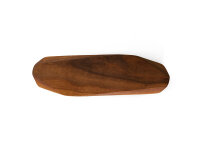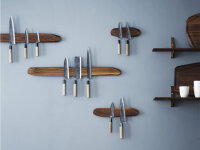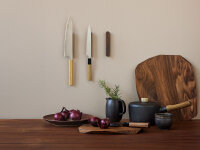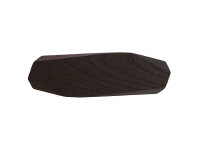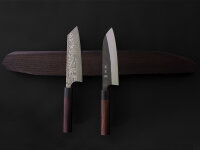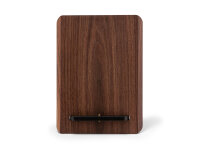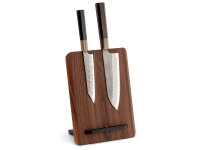
Knives Accessories
The right knife accessories are the foundation for long-lasting quality
Japanese kitchen knives are renowned for their outstanding qualities. Accessories and their proper use are crucial aspects for sustainable enjoyment of these products. Ideal cutting boards should be made of soft wood to prevent the blade from losing its sharpness quickly. The knife should not come into contact with other blades, and from time to time, the blade and handle should be maintained with a bit of oil.
The Knife Bag is the Perfect Protection for Sharp Knives
Whether at home or for transportation, a leather knife bag specially designed for Japanese knives offers the ideal protection. Even for amateur chefs, having the knives in a knife bag during vacations and every cooking opportunity is a dream. Leather is a very suitable material for the bag, combining a high-quality appearance with good durability. When making your selection, ensure that the knife blades in the knife bag cannot collide. Care should always be taken when removing and inserting kitchen knives into the knife bag, as an improper handling can quickly pierce the bag's material.
Avoid mistakes when cutting
The cutting board should ideally be made of wood. Glass is not suitable and can lead to damage to the blade. A plastic chopping board can also be used. It is odorless, the surface is antibacterial, and it can be easily cleaned in the dishwasher. However, it's worth noting that sharp Japanese knives could release fine plastic particles from the cutting board, which could potentially end up in the food.
For a wooden cutting board, the type of wood also matters. Hardwoods like oak, olive wood, bamboo, or beech are very robust and durable. Bamboo cutting boards are often recommended for Japanese knives due to their hardness, providing less give to the blade pressure. For exceptionally sharp knives, softwoods like zelkova or paulownia are best suited. Paulownia wood, also known as kiri, is incredibly lightweight and is recommended as a professional cutting board by our master smiths in Japan.
Regardless of the choice of board, pay special attention to blade guidance. Japanese kitchen knives are used for slicing and chopping, and chopping should be avoided with most knives. The cut material should always be pushed off the board with the spine of the blade to prevent chipping due to the high carbon content.
Blade Guards in Leather, Wood, or Plastic
A knife sheath made of black, soft leather looks good, feels good, and provides excellent protection. The only drawback is the soft material. A cut in the sheath can happen quickly, especially if you are not extremely careful when inserting and removing the knife. Here, the advantage lies with a plastic blade guard. It secures the knife from slipping out with a small pin, and the surface is hard and resistant to damage.
A Knife Strip is a Stylish Accessory in the Kitchen
Whether you are a professional or amateur chef, if you've invested in excellent knives, you probably don't want to hide them in a drawer. With a knife strip or a knife block, the knives are well stored and easily accessible. Most knife strips are made of wood and include a magnet that provides excellent support to the blade's steel. Nevertheless, we recommend handling the extremely sharp knives with care when retrieving them. Knife strips are available in various colors and materials. When caring for black-stained wood, be sure to use a dry cloth only. The contrast of the knife blades on the black wooden board is a beautiful sight.
Choosing the Right Knife Oil for Blade and Wood Handle Maintenance
If you love your car, you drive it—a common saying. If you love your knife, you oil it, and this is meant very seriously, especially when it comes to traditional Japanese knives made of carbon steel. These knives are not rust-resistant, so rust can occur fundamentally. Especially when the knives are not used for an extended period and possibly not stored completely dry. The handle's wood can also be maintained with knife oil, making it a useful knife accessory that should not be missing in any kitchen.

